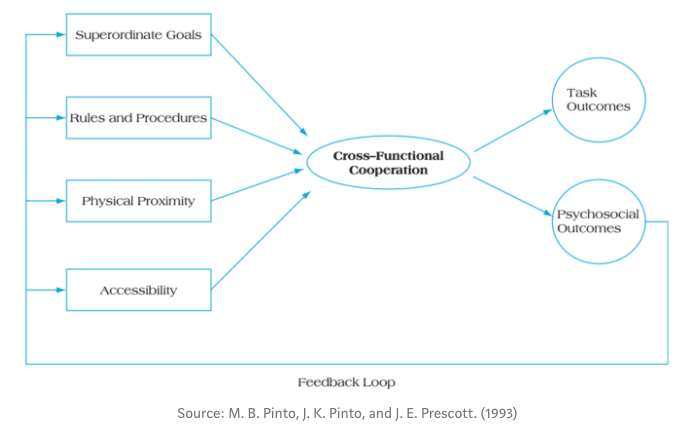When one project or organization gets bigger and involves more collaborations between different people from different expertise, it‘s imperative to ensure smooth integration among different teams.
Therefore, understanding the characteristic of cross-functional cooperation (CFC) has become one of the basic knowledge of any manager.
What is Cross-functional Cooperation (CFC)?
Cross-functional cooperation is a group of people including those with different expertise in finance, operations, marketing, HR, and IT to work together towards a common goal. Each will focus on their area but share knowledge and resources to facilitate and expedite the successful team goal.
Managers need to clearly understand what defines a successful CFC
When individuals with diverse work styles and functions come together the results can be innovative and transformative. Research shows however that despite its positive effects, many cross-functional teams are dysfunctional.
Therefore, it is important that leaders or managers must have a clear understanding of what influencers will impact the team’s productivity and its possible outcomes if they could achieve those.
The Influencers
There are 4 main influencers that impact cooperation
Image for post

A superordinate goal
To complete a major goal of the project, managers usually split into many small features/projects with a clear goal, which will support one final big project.
In order to build a beautiful and well functional Macbook, we cannot have 1 team to build everything.
Therefore, it is split into many small teams to work on specific tasks, which support one feature of the Macbook.
For example, we may have 2 teams: Software and Hardware.
The software Team can split into many sub-teams:
- Cloud, iOS Version, UI/UX…
Same thing for the Hardware team:
- Battery, Trackpad, Mainboard, Wifi, Bluetooth…
Of course, those listed teams above can be divided into many smaller teams to work on smaller parts to support that feature. In the final phase, all small features combine together to create a successful Macbook Pro as we see today.
Rules and procedures
No team is successful without rules/regulations
When we code as a team, there is a specific rule or guideline for all developers to follow so that others can read the code easily and reduce the time to understand.
If a team consist of 10 developers and all 10 developers have 10 different coding style, then we will have a massive merge conflict when other developers try to merge different features to make their feature works. It will waste a lot of time and headaches.
3 months ago, I wrote 2 simple tips to increase code development, which now all my team members could code with more confidence than other teams in classes.
Consequently, it is imperative that a clear hierarchy is defined and the rules of engagement and communication are understood by all.
Physical proximity
For a team to produce the best results, it’s better for everyone to stay close to each other.
When I intern at PayPal, all the team members sit together on the same floor, the same area. So whenever my manager wants to do a standup meeting, everyone can walk 5 seconds to his desk. Or if I have questions, I can move my chair next to my mentor to ask questions. This will save a lot of time and provide better communication.
“When project team members work near one another, they are more likely to communicate and, ultimately, cooperate”
Due to Covid-19: Many companies now switch to remote meetings via Zoom, Facebook Messenger, Google Meet/Google Hangout, Discord, etc.
I‘ve been a fan of Facebook Messenger and WebRTC technology, and now they just released new features to share screen and add more people to the group’s video call, which is so awesome.
Accessibility
Having the same working environment system will enable everyone to collaborate with each other better.
When we want to schedule a meeting, team members should have the same calendar system such as Outlook, Google Calendar, Calendar. This allows everyone to easily see each others’ schedules and make a meeting without having back-to-back rescheduling’s conflicts.
There are many great tools for project management such as MS Project, Asana, Monday, Sunsama, Smartsheet, etc. but since most of the tools are paid, so as a developer, I just prefer Github Project
Outcome
At the end of a milestone, the project manager will analyze and evaluate the team’s performance based on 2 different outcomes:
- Task outcomes First and foremost, managers will examine the success of a project by the final result:
- Whether or not have the team achieved the goal this week or month.
- By giving the best resources to the team, have they fully or partially achieve the goal
- Psychosocial outcomes
This type of outcome usually results in the team’s communication, individuals’ emotion.
The emotional and psychological effects that strong performance will have on the project team.
- Is everyone happy with each other?
- Is it easy for each member to express and listen to different ideas? Then, the manager will learn what to improve for better results next time and continue to keep or change the way the team works!


Top comments (0)